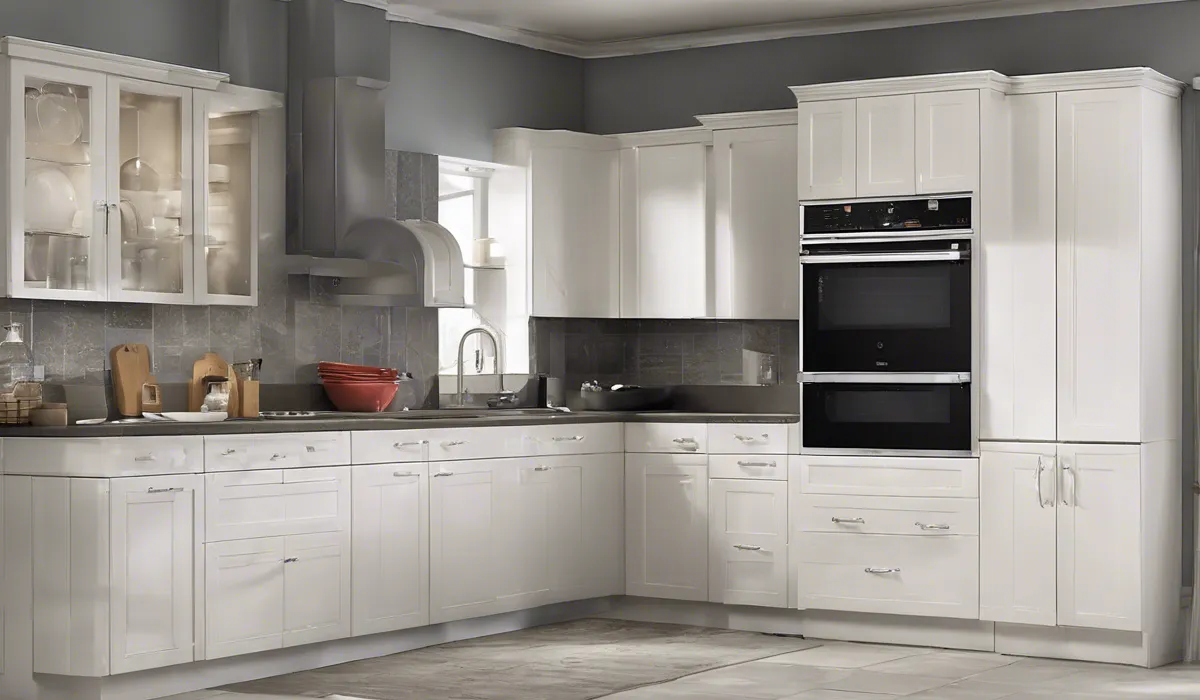How to Install Dishwasher in Cabinet: A Step-by-Step Guide
Ensure the cabinet space fits the dishwasher size. Turn off power and water supply. Slide the dishwasher into the cabinet, connect water, drain lines, and secure with brackets. Restore power and water to test.
Preparing for Installation

Assessing the Installation Area
Before bringing a new dishwasher into your home, it’s crucial to measure the cabinet space to ensure a proper fit. Use a tape measure to get the height, width, and depth of the opening, noting any obstructions.
Compare these measurements with the dimensions of the dishwasher you’ve chosen. It’s important to leave a little extra space for ventilation and hose connections.
If you’re unsure about what size dishwasher you should choose for different uses, consider looking into resources.
Utility Access and Removal of Obstructions
Check the proximity of electrical, water, and drainage services to the dishwasher’s location.
You’ll need access to a 120-volt outlet, hot water supply, and a drain. Turn off the power and water supply before starting the installation process.
If there are doors, drawers, or a false cabinet front where the dishwasher will go, remove them to clear the way for the appliance.
Floor Evaluation and Tool Preparation
Examine the floor where the dishwasher will sit. It must be level to avoid operational issues. Use a level to check and adjust the legs of the dishwasher later during installation.
Installing the Dishwasher

Water Supply Connection
Begin by connecting the water supply line to your dishwasher. This typically involves a flexible steel braided line. Use Teflon tape to wrap the threaded ends to prevent leaks.
Connect one end to the dishwasher’s water inlet and the other to the shut-off valve under the sink. Ensure the connection is snug but do not over-tighten, which could damage the threads.
Drainage Configuration
The drain hose needs to be attached to the dishwasher’s drain pump. Route the hose to the sink drain or garbage disposal, making sure it has a high loop to prevent backflow. Secure the hose in place with clamps.
Electrical Connections
If your dishwasher is not a plug-in model, you’ll need to run electrical wiring to it. Connect the wires using wire nuts, matching the colors accordingly: black to black, white to white, and ground to ground.
Follow local electrical codes to ensure safety. Once connected, use electrical tape to secure the wire nuts and wires.
Securing and Leveling the Dishwasher
Carefully slide the dishwasher into the cabinet space. Adjust its position so that it’s level and plumb, using shims if necessary.
Once in place, open the door and secure the dishwasher to the countertop or sides of the cabinet using the brackets provided. This prevents the dishwasher from tipping when the door is open and loaded with dishes.
Finishing Touches

Leak Testing and Adjustments
With the dishwasher connected, turn the water supply back on and inspect for leaks.
Tighten any connections if necessary. Restore power to the dishwasher and run a test cycle to check for operational issues. Adjust the leveling feet if you notice any excessive vibration or noise.
Reinstalling Cabinet Components
Once you confirm the dishwasher is functioning correctly, you can proceed to reinstall any doors or drawer fronts that were removed. Align them carefully to ensure a uniform look with the rest of your cabinetry.
Sealing and Insulation
Inspect the gaps around the dishwasher. If there is a noticeable space, use insulation or sealant to close it.
This not only improves the aesthetic but also prevents moisture from seeping into the cabinetry. Make sure not to block any ventilation openings that are necessary for the dishwasher’s operation.
Clean Up and Review
With the installation complete, clean up any debris and tools from the work area. Take a moment to review the installation instructions for your specific dishwasher model to ensure that you haven’t missed any important steps or details.
Proper installation will ensure your dishwasher operates efficiently and safely for years to come.
FAQs About Installing a Dishwasher in a Cabinet
How do I ensure my cabinet space is the right size for my new dishwasher?
Measure the height, width, and depth of the dishwasher and compare it to the cabinet space. Ensure there’s enough room for the appliance and its connections.
What safety precautions should I take before installing a dishwasher?
Turn off power at the circuit breaker and shut off the water supply before beginning the installation.
How do I secure the dishwasher to the cabinet?
Use the mounting brackets provided to attach the dishwasher to the underside of the countertop or to the sides of the cabinet.
How do I connect the water and drain lines to my new dishwasher?
Connect the water supply line to the dishwasher’s inlet valve and the drain hose to the drain outlet or garbage disposal.
How can I test my newly installed dishwasher?
Turn on the water supply and power, then run a short cycle to check for leaks and proper operation.
Final Thoughts
To successfully install a dishwasher in a cabinet, first verify that the cabinet dimensions are adequate for the dishwasher. Before installation, disconnect the power and water supply.
Carefully slide the dishwasher into the cabinet, make the necessary water and drain line connections, and secure the unit with brackets. After installation, reconnect the power and water to ensure the dishwasher operates correctly.





